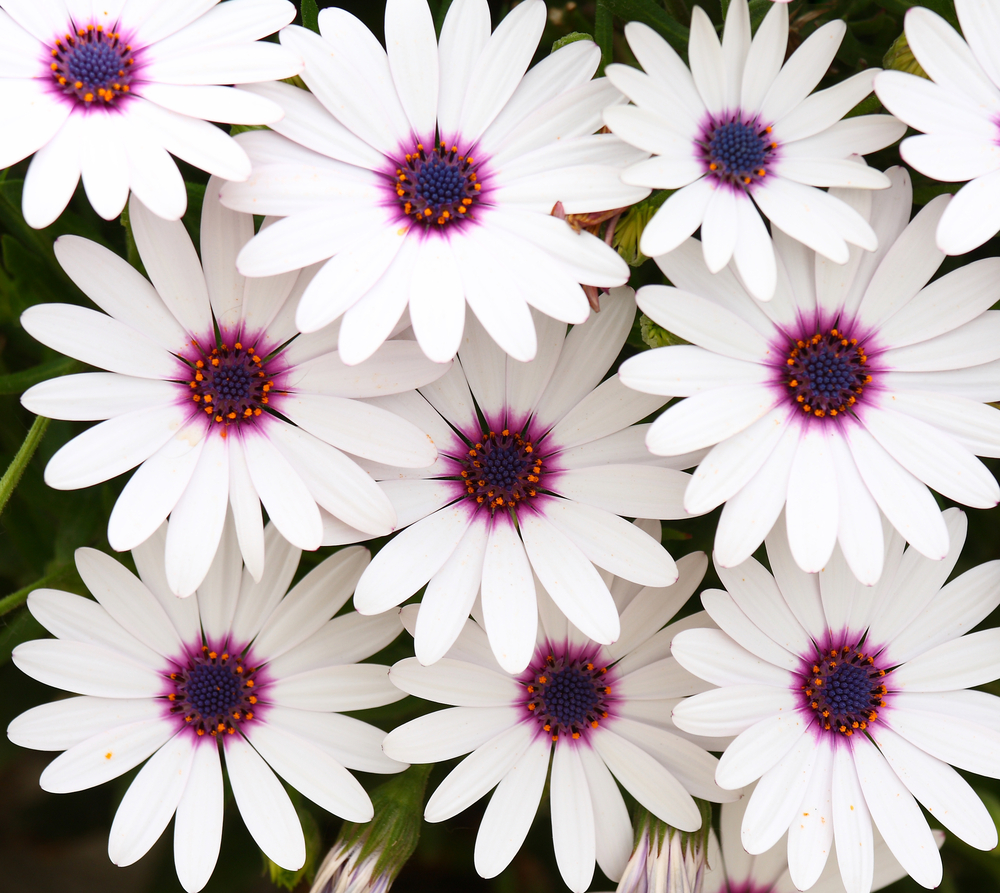
There are hundreds of types white flowers in the world, with many symbolizing purity, innocence, and sympathy. If you’re looking to grow white flowers in your garden, join me as I take you through 51 of the most beautiful options available to you.
1. Petunia
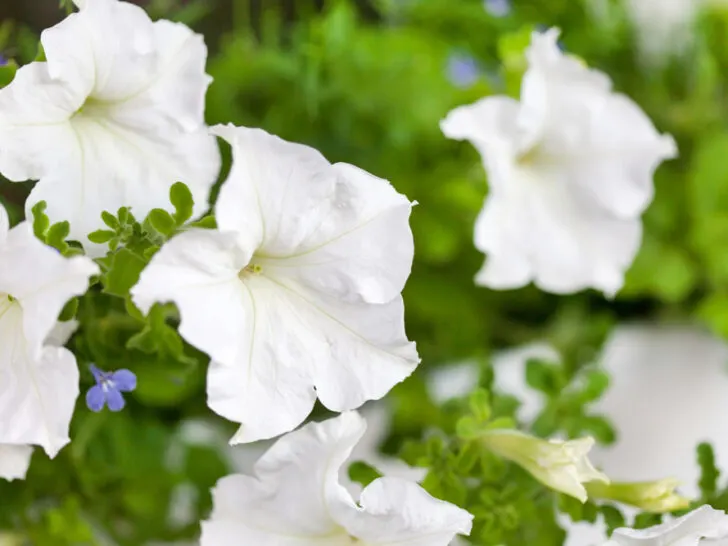
Petunias are annuals most commonly available in shades of white and purple. However, they also bloom in a range of other colors. If you’re looking for white petunia flowers, you should plant Petunia axillaris, also known as the white moon petunia.
These flowers do best in USDA hardiness zones 9 to 11. They prefer slightly acidic soil and are a good option if you’re looking to attract bees and moths to your garden.
2. Heliotrope
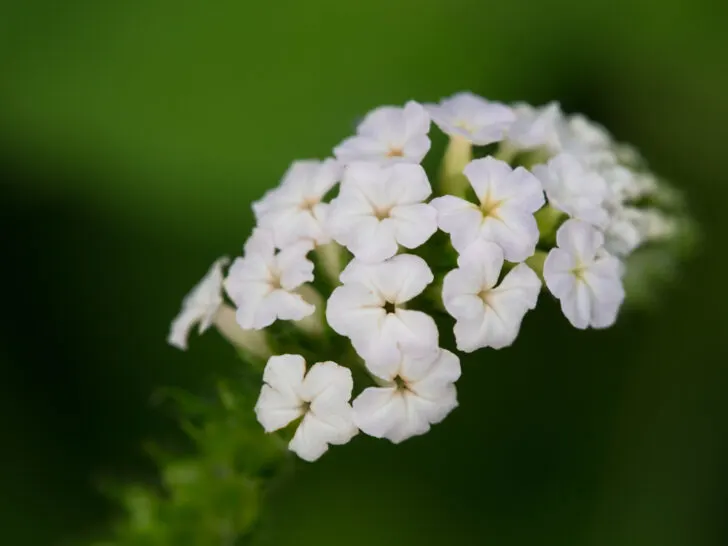
Heliotropes are strongly scented plants that feature flower clusters on their stems. The scent of the heliotrope is sweet and similar to vanilla.
Although most heliotropes are blue or purple, a small percentage heliotropes are white. These plants do best in USDA hardiness zones 10 and 11 and require moist, well-draining soil to do well.
3. Japanese Anemone
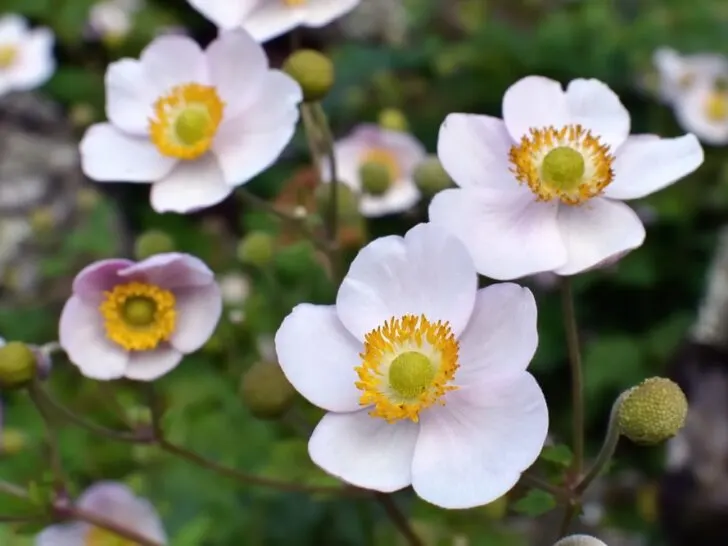
Despite its name, the Japanese anemone is actually native to several countries in East Asia, particularly China. These wildflowers prefer well-draining soil and do best in USDA hardiness zones 4 to 8.
These flowers are a great option if you’re looking to attract butterflies to your garden. Like other anemones, this flower symbolizes anticipation and fragility. In China, it is also considered to be a symbol of illness.
4. Camellia
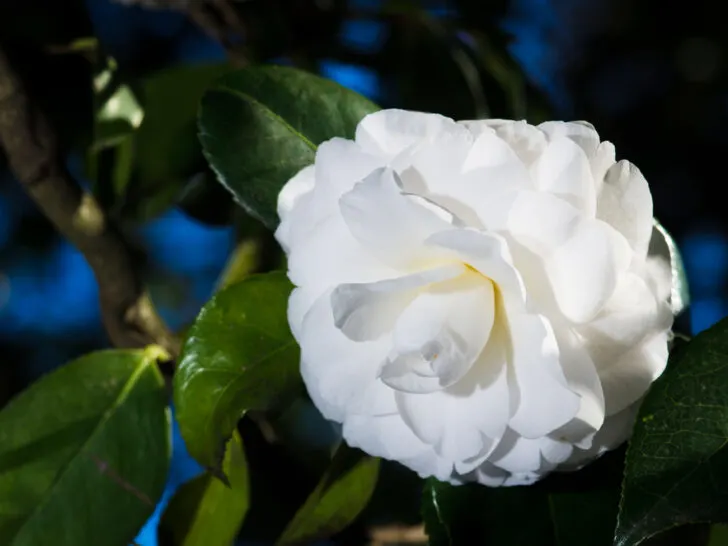
Camellia flowers are members of the genus Camellia. Like Japanese anemones, these flowers are native to Asia, and the genus features over 200 species of plants.
They are available in a range of colors, including pink, red, and – of course – white. They do best in USDA hardiness zones 7 to 9 and prefer acidic soil.
5. Baby’s Breath
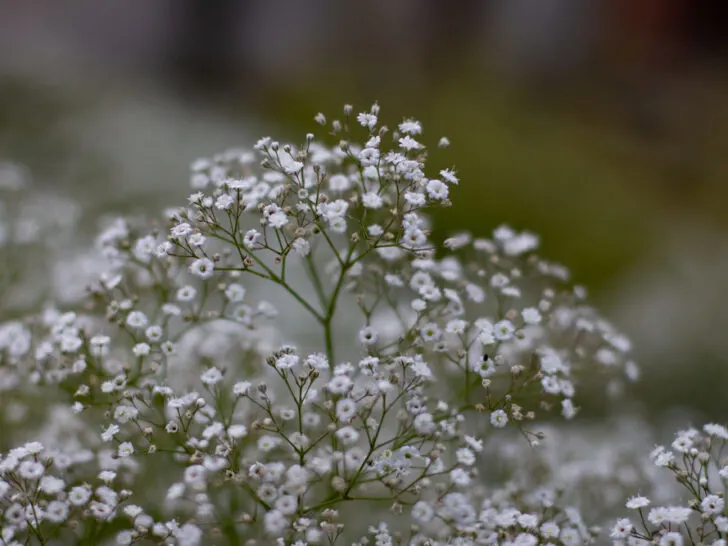
Baby’s breath is most commonly seen as a filler flower in floral arrangements. However, because of its symbolism of everlasting love, it is also frequently used in bridal bouquets.
While white baby’s breath is the most common variety of this flower, it is also available in pink. You can grow this flower in well-drained, alkaline soil – however, be aware that it is toxic to humans and animals if consumed.
6. Spider Mum
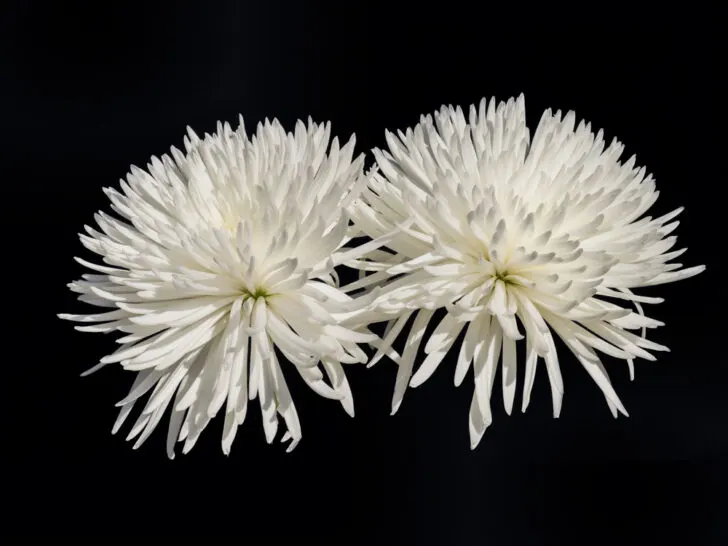
The spider mum is a member of the chrysanthemum family and features spiky petals that create a uniquely attractive look. They do best in USDA hardiness zones 5 to 9 and bloom late in the year.
If you’re looking for flowers that will bloom when the rest of your garden won’t, these flowers are what you need. In China, these are commonly used in weddings and symbolize purity and truth.
7. Snowdrop
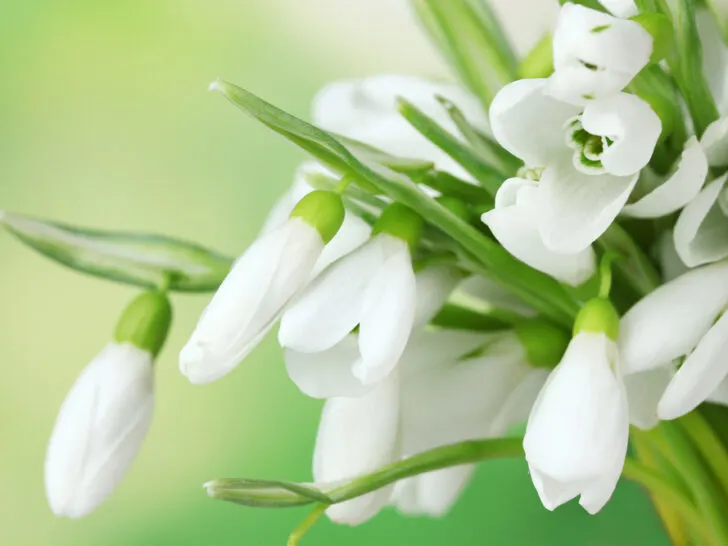
Also known as Galanthus (the name of the genus), the snowdrop is a delicate flower that, as its name indicates, blooms in the winter and early spring. Seeing it bloom is considered the first sign of spring in some places.
These flowers prefer moist but well-drained soil. If you want to see them bloom in the winter, you should plant them by fall.
8. Tulip
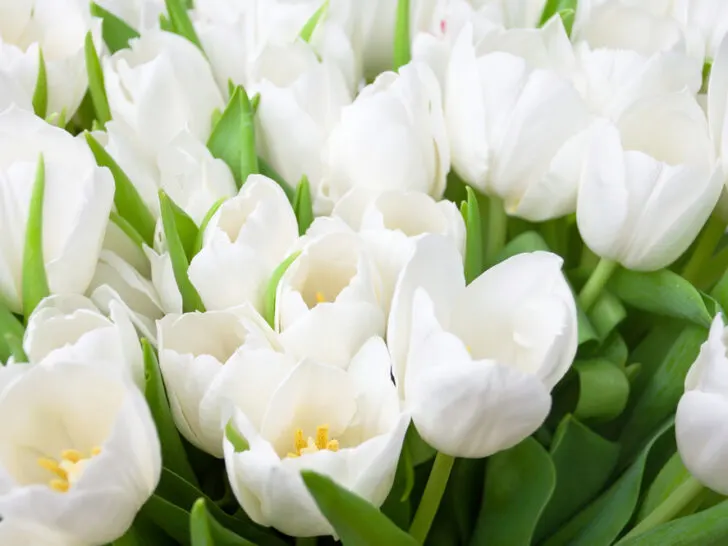
Tulips are best known as the national flower of the Netherlands. While these flowers are popular for their colorful blooms, they are also often available in white.
The Tulip genus features over 100 species of tulips, and these perennials do best in hardiness zones 3 to 8. They bloom in the spring and prefer the full sun.
9. Bellflowers
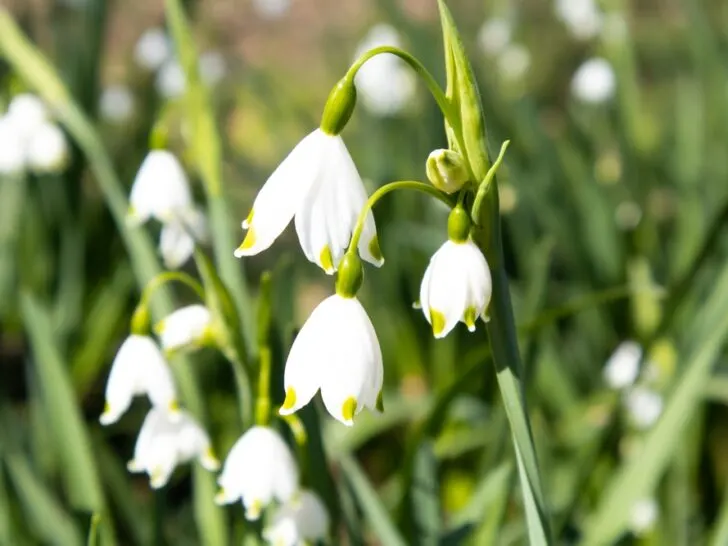
Also known as campanula, bellflowers are cheerful, bell-shaped flowers that are popular as cut flowers and in floral arrangements. These flowers symbolize everlasting love and do best in USDA hardiness zones four and above.
They can tolerate the cold quite well and occasionally grow in USDA zone 3 with some additional care. They can tolerate most soils, including highly acidic ones, making them a popular option to grow in areas where other flowers would not.
10. Magnolia

Magnolias generally have either white or pink flowers. This genus contains around 200 – 300 plants and is found around the world, including in Asia and North and South America.
They are representative of the American South and generally grow on trees with large, leathery leaves. However, with careful pruning, you can keep your magnolia tree to shrub height. Magnolia flowers symbolize pride, endurance, and dignity and do best in USDA hardiness zones 4 to 9.
Magnolia trees have unusual pollination habits, as they are pollinated mainly by beetles rather than bees. This is because these ancient plants evolved before bees did.
11. Foxglove
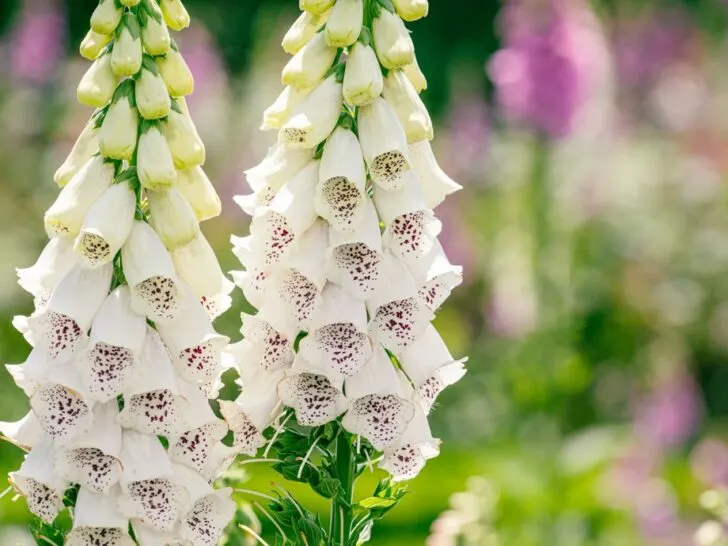
Also known as digitalis, foxgloves are bell-shaped flowers that grow vertically on flower “spikes.” These plants are a popular option for people looking to add some height to their landscaping without compromising on beauty.
These flowers do best in USDA hardiness zones 4 to 10; they can tolerate full sun to partial shade, depending on the severity of the heat, and prefer moist, well-draining soil. While foxgloves are popular as cut flowers, it’s essential to note that they can be toxic to humans and animals if consumed.
12. Lobelia
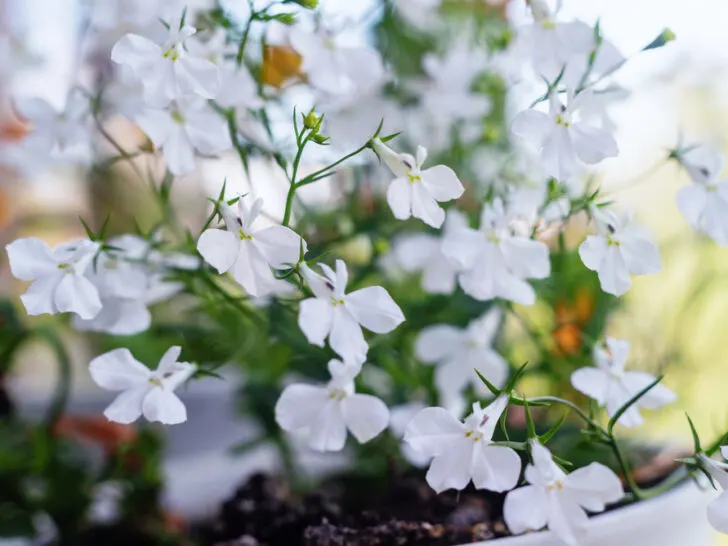
Native to Africa, the Lobelia is a flowering plant that has been used as a medicinal herb for centuries. Aside from its medical uses, this plant features attractive flowers that are generally purple but can be blue, pink, red, and white.
These plants do best in USDA zones 10 and 11. While the plant is used for medicinal purposes, it’s essential to be very careful when using it. In high doses, it can be extremely toxic to both humans and animals.
13. Dahlia
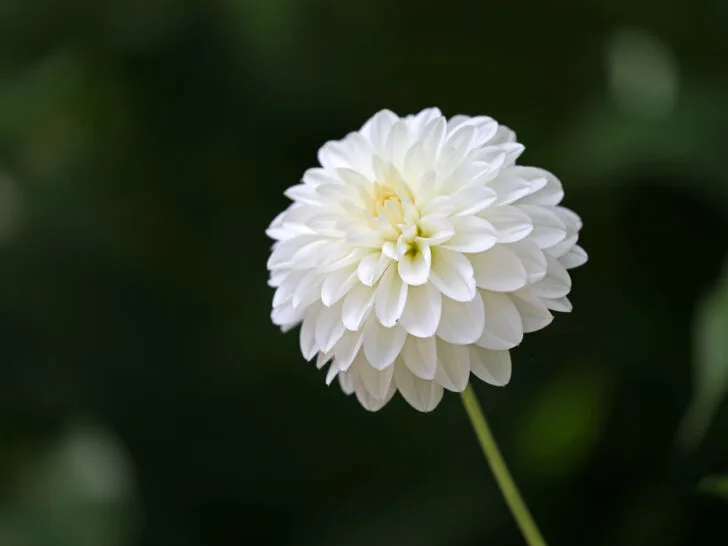
Dahlias are attractive flowers available in a range of sizes and colors, including white. These lovely flowers do best in USDA hardiness zones 6 to 11 and bloom in the summer and fall. They aren’t very frost tolerant and will need to be dug up if you expect them to survive the winter.
These flowers are popular not only as landscaping flowers but also as cut flowers and are a good way to add cheer to flower bouquets and floral arrangements. While they don’t tolerate direct heat very well, they do well in full sun in more moderate climates.
14. Hydrangea
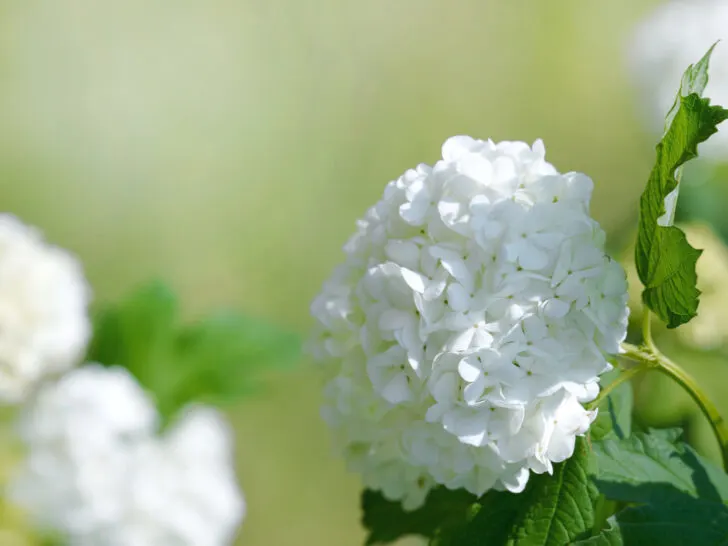
The hydrangea boasts large, beautiful flowers, which makes it a popular choice in floral arrangements. This flower is native to Asia and the Americas and is available in a range of colors.
Hydrangeas do best in USDA hardiness zones 3 to 9. The white hydrangea symbolizes purity and grace, and in Victorian floriography, it symbolizes vanity and boastfulness.
15. Peony
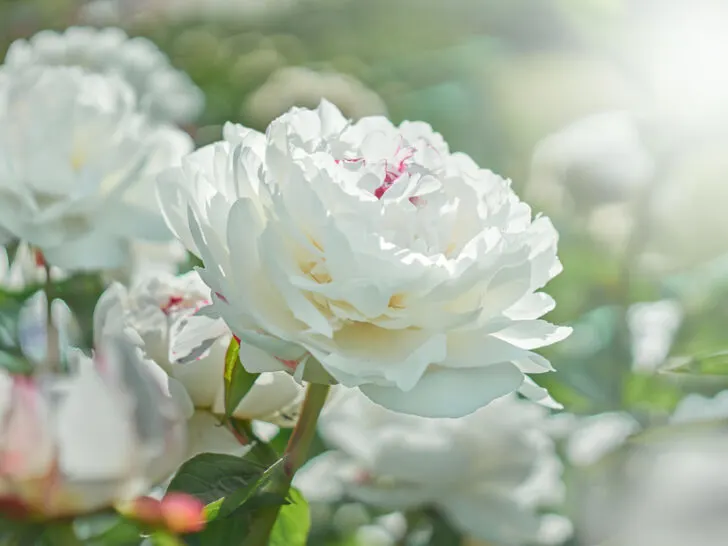
The peony flower is hardy and grows in USDA hardiness zones 3 to 8. These flowers bloom in the spring and summer and are large perennials with fragrances that vary depending on the variety.
These plants prefer the full sun and neutral soil. They can live for as long as 100 years and are easy to care for and grow, making them a popular choice in gardens around the world.
16. Daffodil
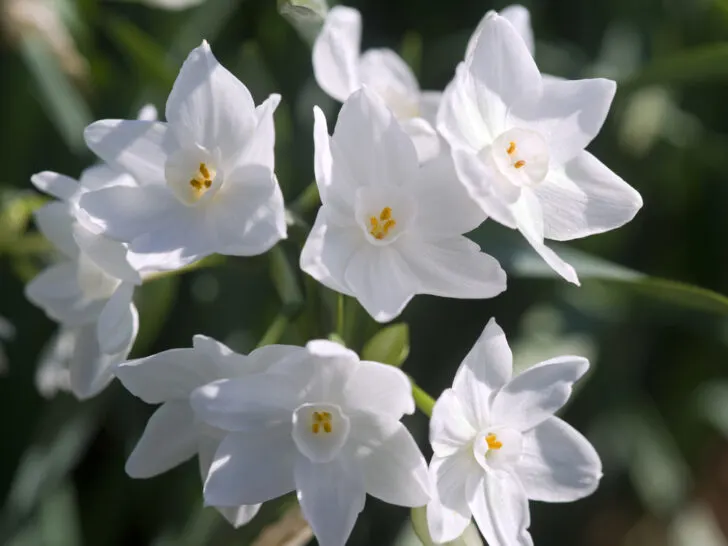
Though daffodils are best known for their yellow hue, there are non-yellow variants— including ones that bloom in white. Some white daffodil varieties include the White Lion daffodil and the Snowball daffodil.
These plants do best in USDA hardiness zones 3 to 8. Aside from white and yellow, they are also available in shades of orange. Daffodils symbolize new beginnings and rebirth.
17. Hibiscus
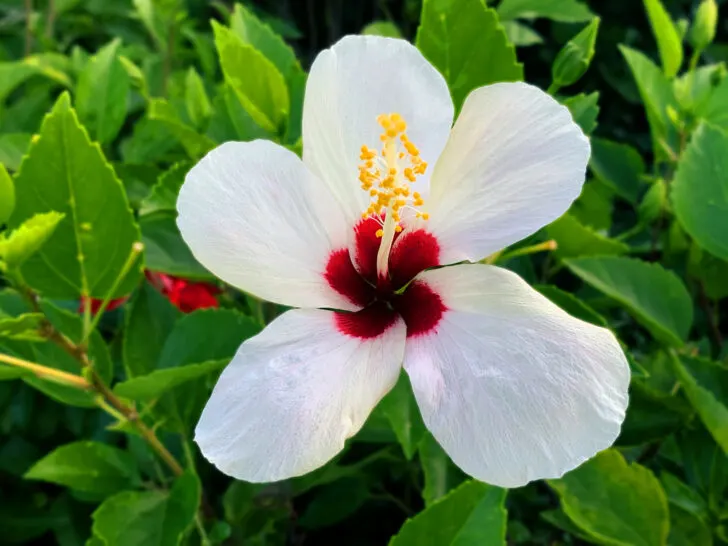
Though the hibiscus is best known for its red blooms, it is available in a range of colors,
including white. These beautiful flowers do best in USDA hardiness zones 5 to 9 and have been
used for centuries for medicinal purposes.
Hibiscus is used to make herbal teas, powders, and other traditional medicinal remedies. There is some evidence that hibiscus contains beneficial antioxidants and can be used to help control blood pressure.
18. Japanese Wisteria
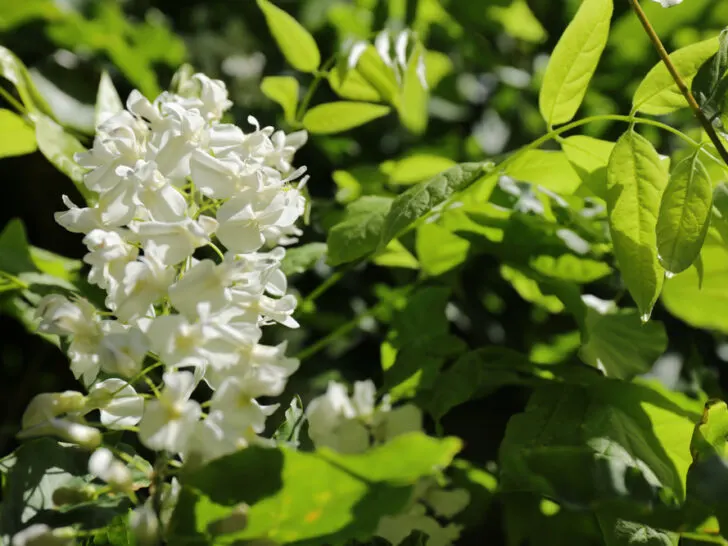
As its name suggests, Japanese wisteria is native to Japan. This beautiful vine boasts lovely purple, blue, pink, and white flowers and has been used as an ornamental plant for centuries.
In its native country, this flower is a symbol of longevity because it can live for over 100 years. However, it has become an invasive species in other parts of the world (including the USA). This is why it’s always best to be extremely careful when planting this vine.
Additionally, it’s essential to keep in mind that this flower is toxic to humans and animals when consumed.
19. Rose
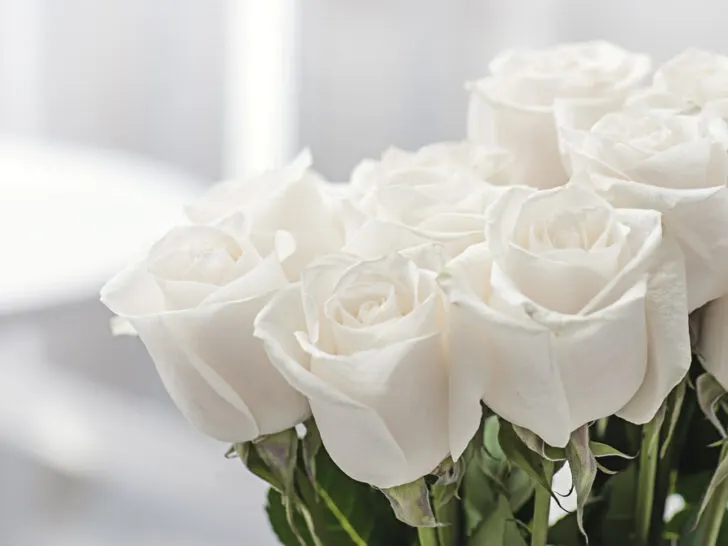
Although red roses are the most popular variant, roses come in a range of colors, including white. These iconic flowers are the birth month flower of June, and there are over 150 species of it — not to mention many thousands of hybrids.
White roses are a symbol of purity, loyalty, eternal love, and innocence. These symbolic meanings make them a popular option in bridal bouquets.
20. Butterfly Bush
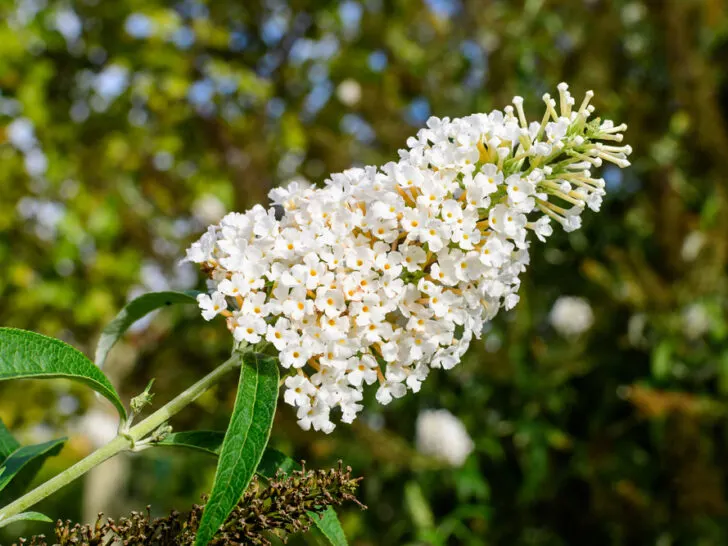
The butterfly bush is a shrub that was given its name for its ability to attract a variety of pollinators, especially butterflies. Native to China and Japan, this plant is also known as summer lilac and orange eye.
The flowers of this shrub are arranged in beautiful spike-like panicles and bloom in numerous colors, including purple, blue, and white. This plant does best in USDA hardiness zones 5 to 9 and should be planted in the full sun.
21. Queen Anne’s Lace
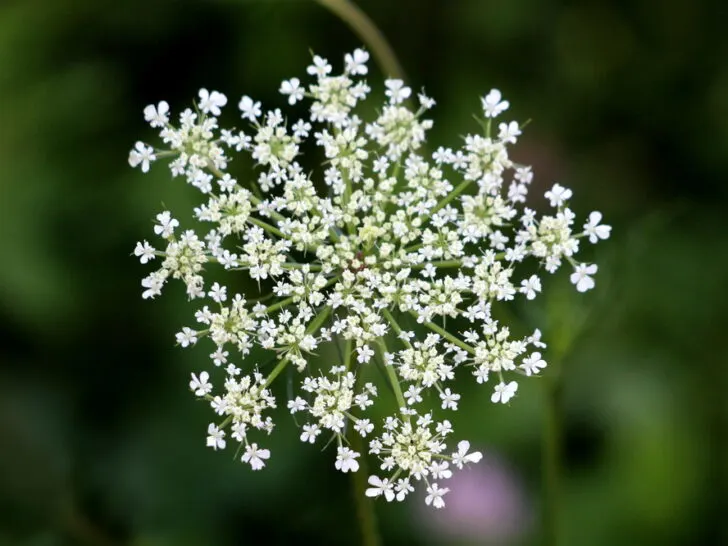
Also known as wild carrot, bishop’s lace, and bird’s nest, Queen Anne’s lace is a plant that features tightly knit white flowers. This plant gets its common name from these white flowers, which are said to resemble the lace headdresses worn by Anne of Denmark.
The flower is symbolic of safety and refuge thanks to its other name, “bishop’s lace.” The common name “wild carrot” comes from the fact that these flowers and carrots are related, and both are members of the same species. The domestic carrot was specifically bred to be a consumable vegetable.
22. Lily of the Valley
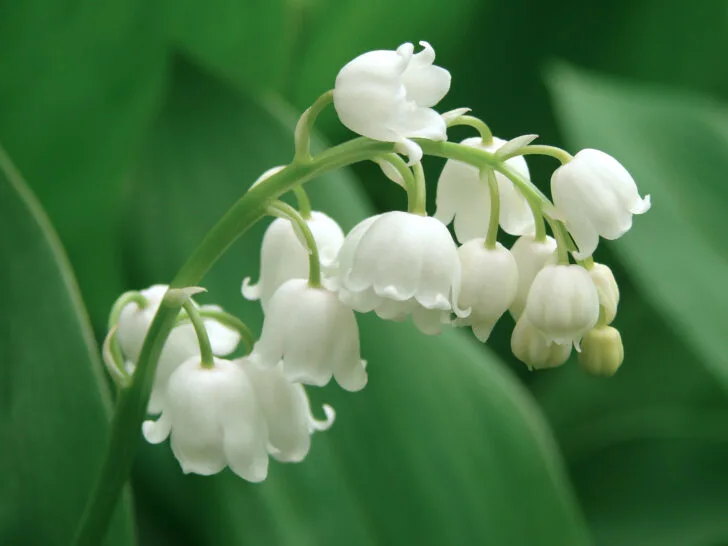
The lily of the valley produces beautiful bell-shaped flowers that are highly fragrant. According to Christianity, this flower was created from Eve’s tears when she was banished from the Garden of Eden.
This plant achieved popularity as having been a favorite of Queen Elizabeth II and a part of Kate Middleton’s wedding bouquet. It does best in USDA hardiness zones 3 to 9.
23. White Mountain Heather
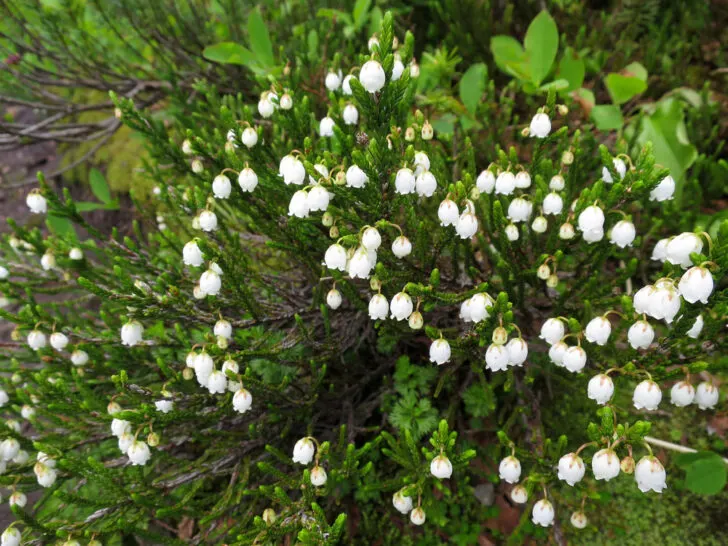
As its name suggests, white mountain heather is common on alpine slopes and is native to western North America. This plant produces white flowers with red bracts and is also known as western moss heather.
It does best in USDA hardiness zones 3 to 7 and blooms in July and August. It prefers well-drained soil and is a great way to add an alpine touch to your garden.
24. Jasmine
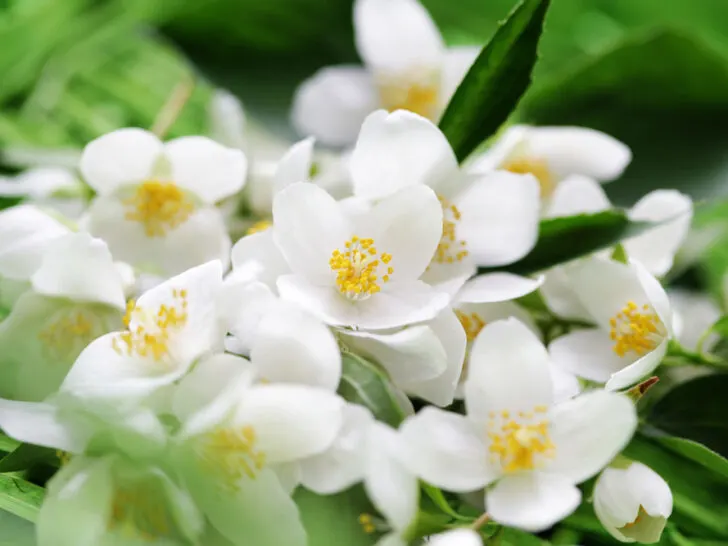
Jasmine is a vine that is commonly grown as a houseplant. While flowers are generally white, they can also be pink and yellow. These sweet-smelling plants do best in USDA hardiness zones 7 to 10.
Keep in mind that when we talk about jasmine, we do not mean star jasmine. While this flower is also highly scented and white, it is not a true jasmine flower despite its name. When growing jasmine, you should provide the plant with well-draining soil and full to partial sunlight.
25. Water Lily
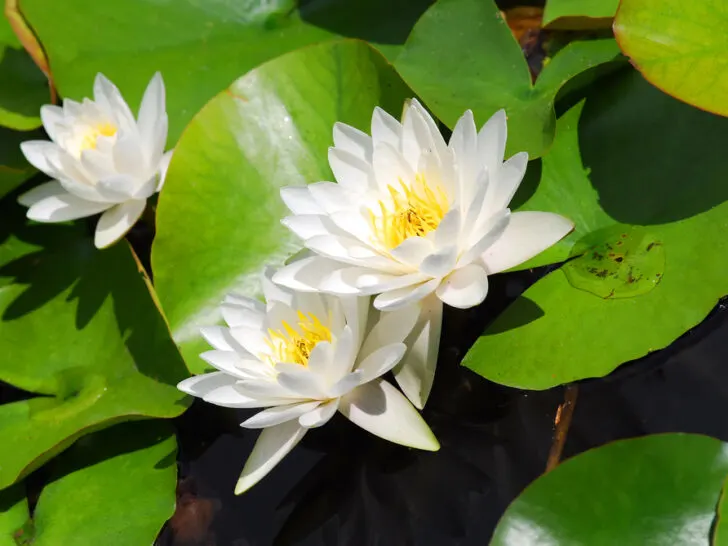
As their name implies, water lilies are an aquatic plant closely related to the lotus. These flowers grow in slowly moving water and are seen in lakes around the world. They are a great option in gardens if you’re looking to add a water feature to your home, and they can be grown in ponds or planters with enough water for them to survive.
Though these plants are best known for their pink coloring, they actually grow in a range of colors, including blue, white, and orange.
26. Columbine
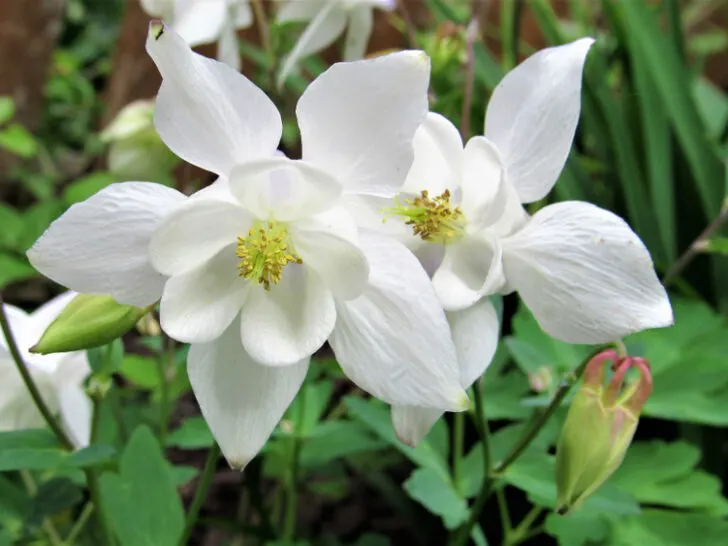
The columbine is a perennial popular for its easy-to-grow nature. This plant produces delicate bell-shaped flowers that bloom in a variety of colors, including red, purple, and white. It does best in USDA hardiness zones 3 to 8.
These plants prefer full to partial sunlight and can be grown from seeds. However, they will not bloom until their second year, so don’t be worried if you don’t see flowers soon after planting.
27. Nemesia

Native to South Africa, nemesia is a beautiful genus that features both annual and perennial species of plants. These ornamental flowers grow best in USDA hardiness zones 2a to 10b and are available in numerous colors, including red, pink, and white. They are even available in bicolor varieties.
These plants require moist, well-draining soil and full sunlight. They symbolize friendship.
28. Gardenia
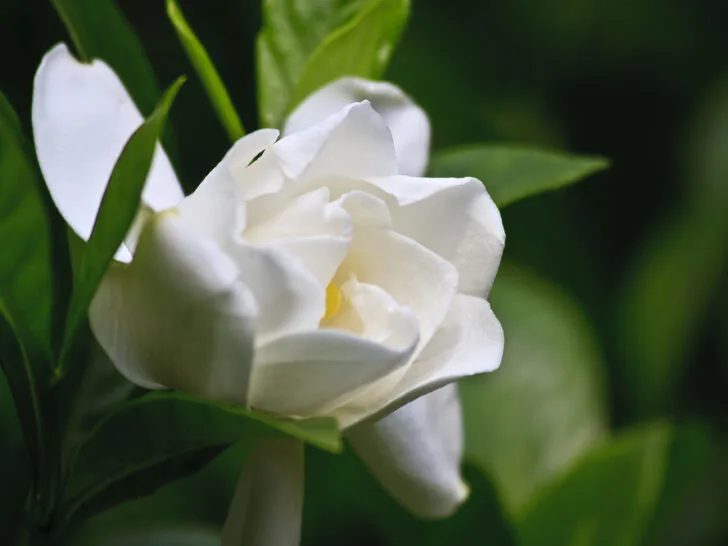
Gardenias are popular in perfumery because of their rich, sweet fragrance. However, aside from ensuring your garden is sweetly scented, these beautiful, creamy white flowers also help make your landscaping look more attractive.
These plants do best in USDA hardiness zones 8 to 11. It’s not just the flowers that are attractive – the glossy green leaves also add to the beauty of your garden. These lovely flowers symbolize purity, gentleness, and trust.
29. Moonflower

Also known as the moon vine or tropical white morning glory, the moonflower is (as its other name implies) a species of morning glory. As the name “moonflower” suggests, these trumpet-shaped flowers bloom at night and grow dormant during the day.
Moonflowers do best in USDA hardiness zones 10 to 12. They symbolize romance and are linked to dreams, and require bright, direct sunlight to grow properly.
30. Bouvardia

Also known as the hummingbird flower, trumpetellia, and firecracker bush, bouvardia is a flower native to Mexico and the United States. This perennial does best in USDA hardiness zones 8 to 11 and is relatively easy to grow and care for.
As some of its names suggest, it is a great option for attracting pollinators like hummingbirds, and it produces trumpet-shaped flowers. It requires full sunlight to partial shade and symbolizes enthusiasm.
31. Dianthus
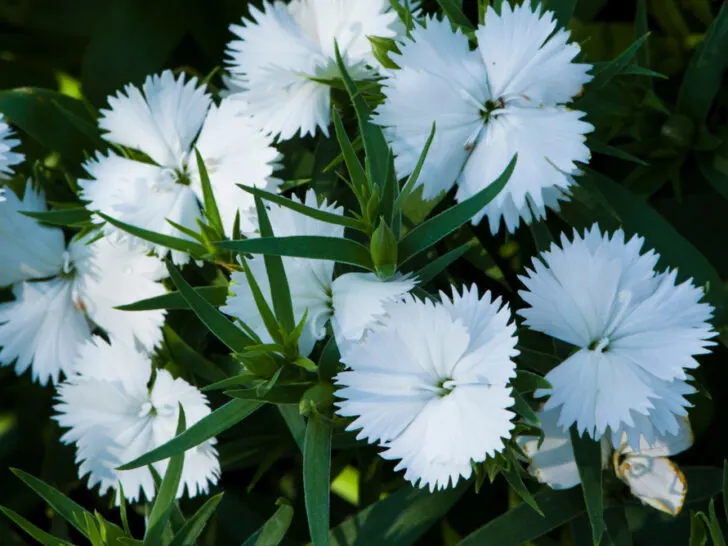
Also known as pinks or Sweet Williams, dianthus flowers include over 300 species of plants that can be annuals, biennials, or perennials. They are popular in homes and gardens for their spicy scent and delicate petals.
These plants grow best in USDA hardiness zones 3 to 9. They need alkaline soil and full sun and should only be grown after the last frost has passed.
32. Ranunculus
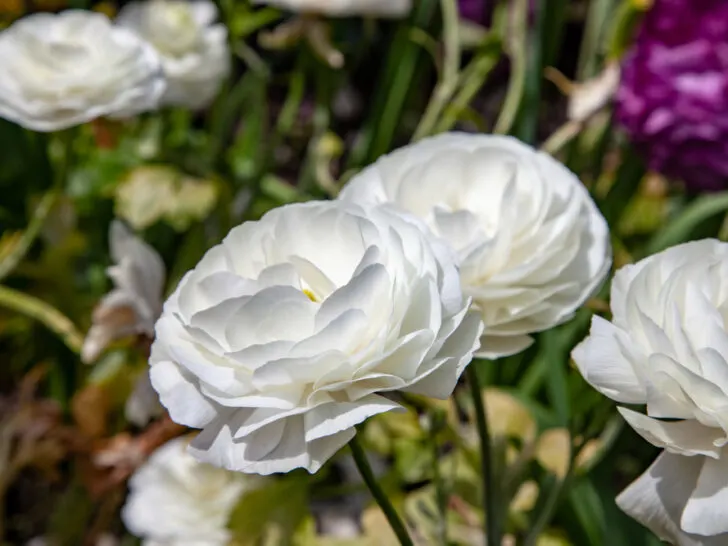
Also known as the buttercup or water crowfoot, the ranunculus is a genus that features over 600 species of plants. These flowers do best in USDA hardiness zones 8 to 10 and need well-draining soil to grow well.
The bright colors and ruffled petals of these flowers make them popular as cut flowers and in floral displays. They are available in a range of colors, including white, and symbolize charm and attractiveness.
33. Calla Lily

Despite their name, calla lilies are not true lilies – they are members of the genus Zantedeschia rather than the genus Lilium. These flowers are native to Africa but today are found around the world.
These graceful, tub-shaped flowers are popular for their exotic look and do best in USDA hardiness zones 8 to 10. They can symbolize life, fertility, or death, depending on the culture.
34. Yarrow
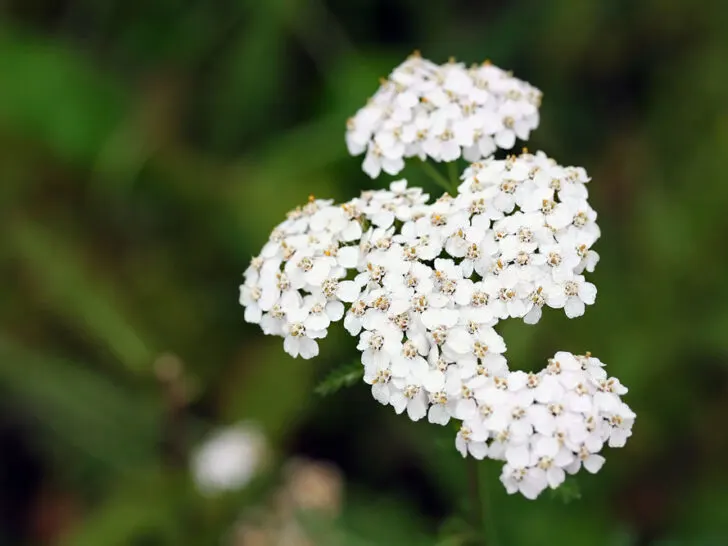
A perennial plant found worldwide, yarrow is popular for its many uses in traditional herbal medication. It can be used to make a variety of concoctions, including ones designed to help fight stomach problems and boost wound healing.
However, aside from its medicinal uses, yarrow is also popular for its delicate, colorful flowers that come in numerous colors, including yellow and white. These plants do best in USDA hardiness zones 3 to 9 and are a great option to attract butterflies to your garden.
35. Amaryllis
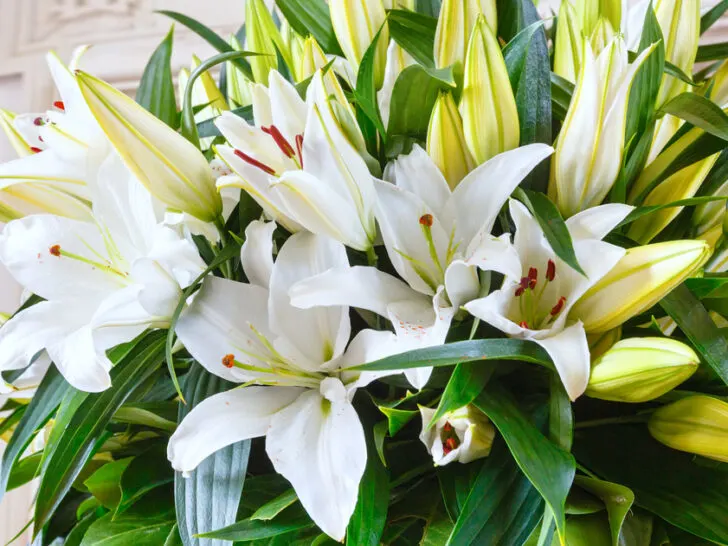
The amaryllis flower is native to South Africa and is also known as the Easter lily or March lily. These names come from the fact that the flower blooms in spring, around March or Easter. Other names for the flower include Jersey lily and belladonna lily.
This flower is the official symbol of Huntington’s Disease. It does best in USDA hardiness zones 9 to 11, and in Victorian floriography, it symbolizes pride and determination.
36. Periwinkle
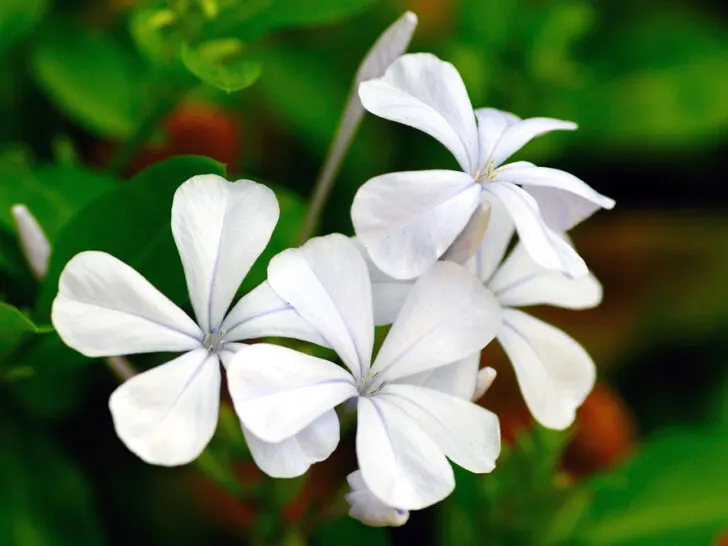
Periwinkle plants are more popular for their dark green foliage than their flower. However, the flowers themselves are lovely, delicate blooms available in various colors, including purple, blue, and white.
This plant does best in USDA hardiness zones 4 to 9 and blooms from spring to fall. It requires partial sunlight and is a low-maintenance plant that helps attract birds to your garden.
37. Snapdragon
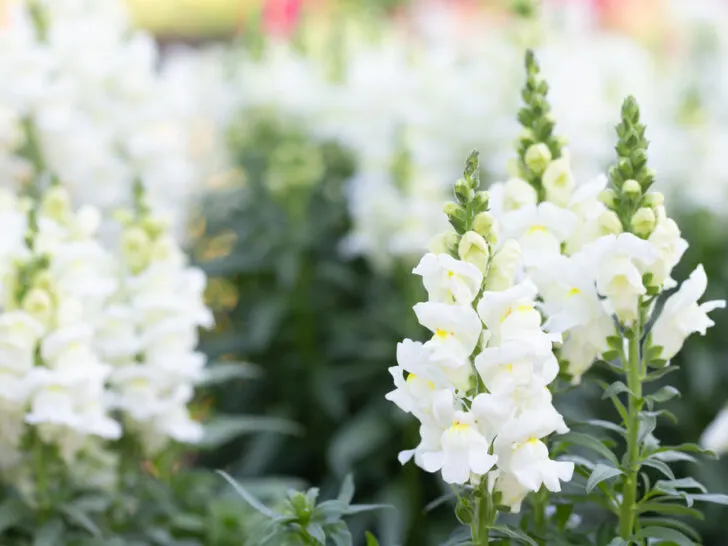
Also known as the dog flower, snapdragons grow on flower spikes. They are so-named because the spikes are said to resemble the snout of a dragon or, in some cases, a dog.
These flowers do best in USDA hardiness zones 7 to 11 and require full sun to partial shade, depending on the climate. They prefer cooler temperatures.
Snapdragons are symbolic of grace and strength due to their ability to grow on rocky outcrops. Additionally, white snapdragons, in particular, symbolize good magic and innocence.
38. Gladiolus
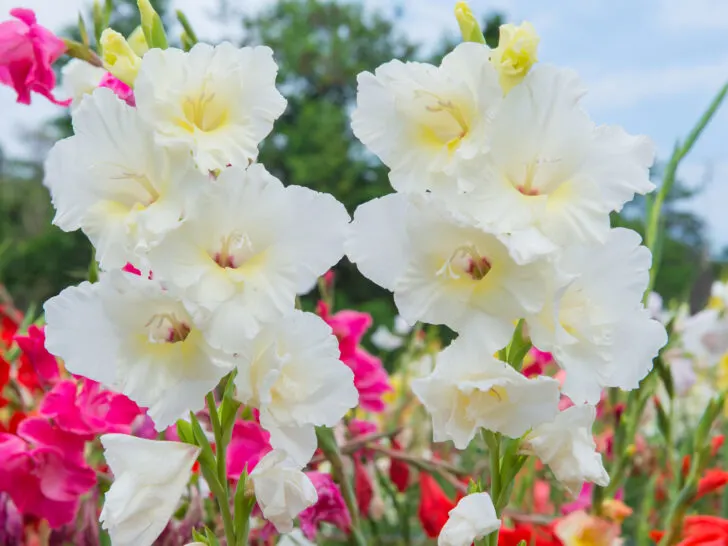
Although they’re also known as sword lilies, gladioli aren’t actually members of the lily family. Rather, they belong to the Iridaceae or iris family. These beautiful flowers get their common name not because of their flower spikes but because of their leaves, which are said to resemble swords.
These flowers do best in USDA hardiness zones 8 to 11 and enjoy the full sun. They bloom in the summer and are available in a range of colors, including orange, red, and, of course, white.
39. Scabiosa
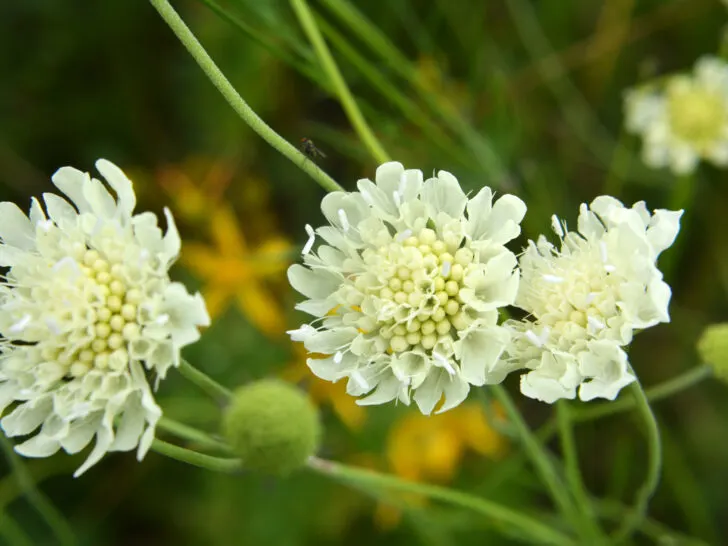
Also known as pincushion flowers, scabiosa flowers are members of the honeysuckle family. Though the flowers aren’t as big as some other options you can grow, they are surprisingly hardy and do best in USDA hardiness zones 3 to 7.
These flowers require the full sun and alkaline soil to grow well. They are a great option if you’re looking to attract pollinators to your garden and are relatively simple to care for.
40. Rhododendron
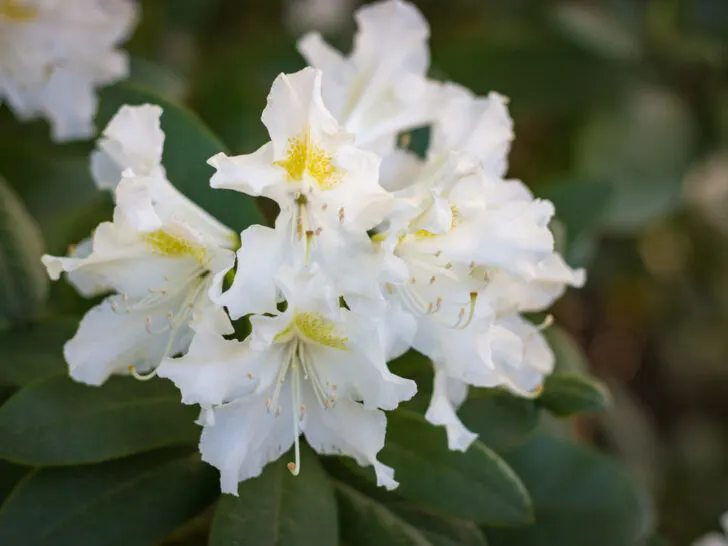
Rhododendron plants boast large flowers in a variety of colors, including white. These flowers are the national flower of Nepal and are found around the world.
These are popular not only for the beautiful nature of their blooms but also for their many medicinal uses. They are used to make food items like teas and jams that are said to be able to treat a range of health conditions.
Rhododendrons do best in USDA hardiness zones 4 to 8 and root relatively shallowly. They require partial sun and bloom from spring to fall.
41. Yucca
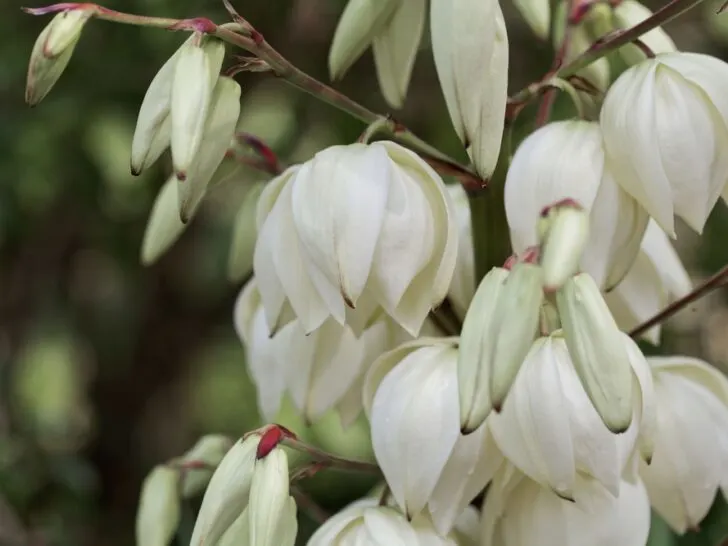
Also known as the palm lily, the yucca is a member of the agave family native to North America. This perennial plant was an important food and cash plant for the Southwest Native Americans, including the Navajos.
The root of the yucca plant is said to have medicinal qualities and is used as a food source. Aside from the root, the yucca plant is also popular for its delicate white blooms. These flowers take up to three years to bloom — but once they do, the effort expanded will have been worth it.
These plants do best in USDA hardiness zones 5 to 11 and need well-draining soil so their roots don’t get waterlogged.
42. Tuberose

A member of the agave family, the tuberose is popular for its sweet, strong fragrance. This makes them widely used not only as cut flowers and floral arrangements but also for perfumery, candle-making, and other similar uses.
These flowers do best in USDA hardiness zones 9 to 11 and bloom from summer to fall. Native to Mexico, they require full to partial sunlight depending on the intensity of the heat.
43. Lotus

Unlike many other flowers, there are two true species of lotus. Many other plants are called “lotus,” but there are only two actual plants that bear the lotus genus — Nelumbo.
The first, Nelumbo nucifera, is native to Asia and Australia, where it is called the Indian or sacred lotus. This is the more popular of the two and is usually the one people mean when they say lotus.
The other variety, Nelumbo lutea, is native to North America, and for that reason, it is generally called the American lotus. It is less commonly also called the volée.
These plants have religious significance in several religions, including Hinduism, Buddhism, and Christianity. The lotus is the national flower of India and does best in USDA hardiness zones 5 to 10. In China, it is regarded as a symbol of longevity.
44. Hosta
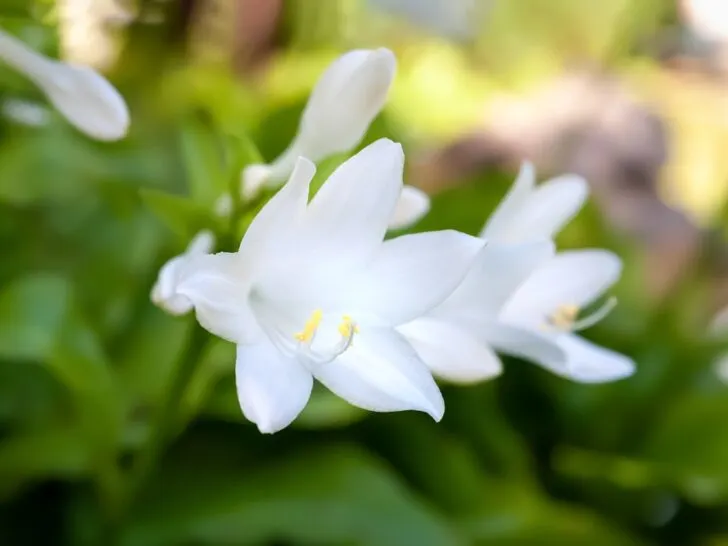
Hostas are generally grown for their foliage rather than their blooms, and their colorful leaves make for great ground cover in your garden. These water-loving plants are favorites to plant near water features and pools and are a great landscaping feature in areas that would otherwise be bare.
While their leaves are colorful, their flowers are even more so. Their flowers are a range of colors, including purple, pink, and white.
That said, it’s essential to be careful with these plants if you have pets – while they are safe for humans, they are mildly toxic to cats and dogs.
45. Lily

Lilies are trumpet or star-shaped flowers with six petals. These flowers are well-known for their graceful appearance and are some of the most popular cut flowers in the world. They are commonly used in floral arrangements and are prized for their sweet scent.
Depending on the species, these flowers do well in a range of USDA hardiness zones. There are over 80 species of true lilies in the world. Aside from their use in landscaping, lilies also have cultural significance in many parts of the world, including as food and in many traditional Asian medicines.
46. Walking Iris

Also known as the fan iris, the poor man’s orchid, the apostle plant, and North’s false flag, the walking iris is a member of the iris family native to Brazil. The common name for this plant, “fan iris,” comes from its leaves rather than its flowers, which resemble a fan.
This plant does best in USDA hardiness zones 8 to 11. It is known as the “walking iris” because, once the flowers fade, the seeds drop to the ground and start growing a new plant – giving the impression that this plant is slowly “walking.”
47. Flowering Dogwood
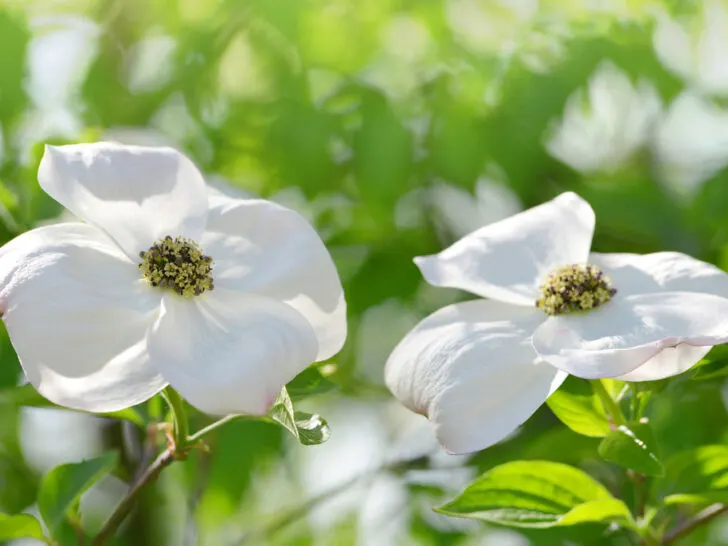
Native to North America, the flowering dogwood blooms in the spring and features pink, red, or white flowers. These showy flowers make the tree an extremely popular dogwood variety.
However, be careful around the fruit, as they are slightly toxic. This tree does best in acidic soil and USDA hardiness zones 5 to 9. The flowers are a symbol of unreciprocated affection.
48. Passion Flower
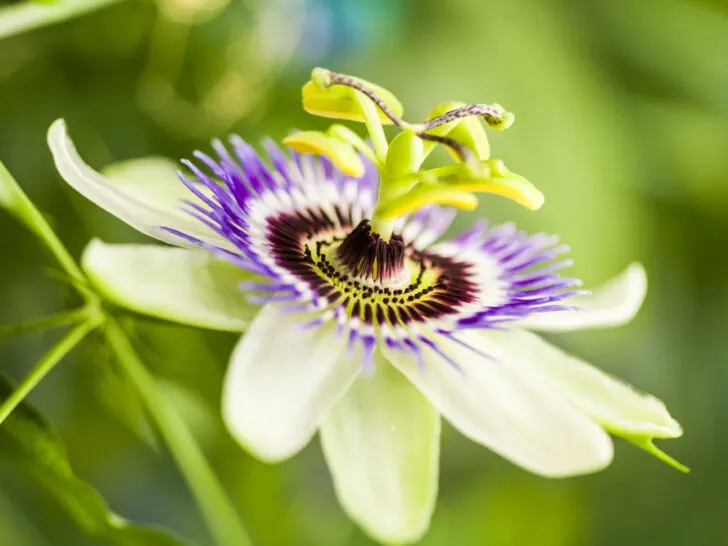
The Passion flower or passion vine is a unique-looking flower that does best in USDA hardiness zones 6 to 10. It is native to North and South America and blooms in summer.
These blooms feature 5 to 10 petals in a flat circle. Though the vines seem delicate, many of the 500 passion flower species are actually very hardy and spread very easily, so you’ll need to choose one for your garden with care. Additionally, some species are toxic to humans and animals.
49. Azalea
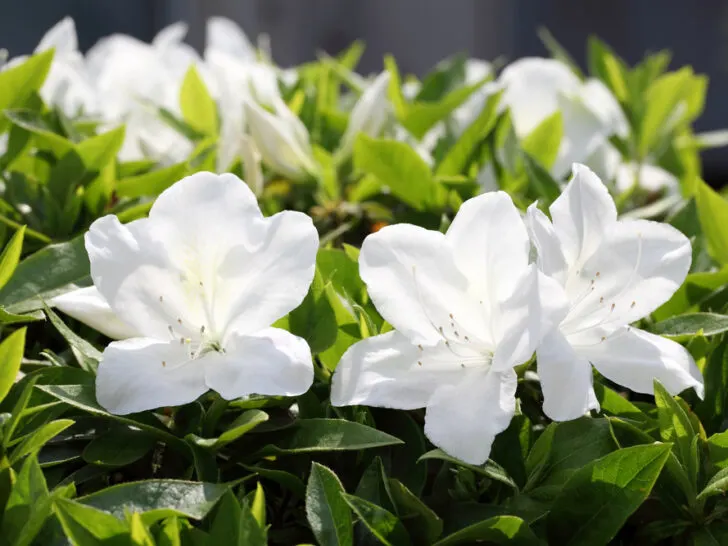
Members of the rhododendron family, azaleas are shrubs that feature lovely, large flowers. These plants do best in USDA hardiness zones 6b to 8a and require acidic soil.
While azaleas bloom in their first year, they continue to grow for up to 10 years. These shrubs are easy to care for and require little maintenance, making them popular in gardens around the world. That said, it’s essential to be very careful when growing these plants because they can be highly toxic for both humans and animals when they are ingested.
50. Begonia
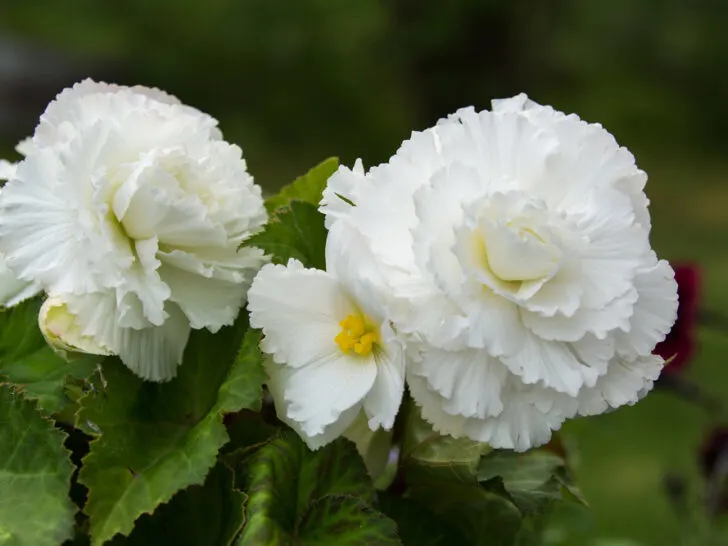
Popular houseplants, begonias are annuals that are easy to care for and maintain. They do best in USDA hardiness zones 7 to 11 and require full sun to partial shade.
These plants bloom from the spring to the fall, depending on the species and whether they’re grown indoors or outside. Generally, they grow from 0.5 to 1 foot (0.15-0.3 m) tall, though some species may grow to 5 feet (1.5 m) tall.
51. Clematis
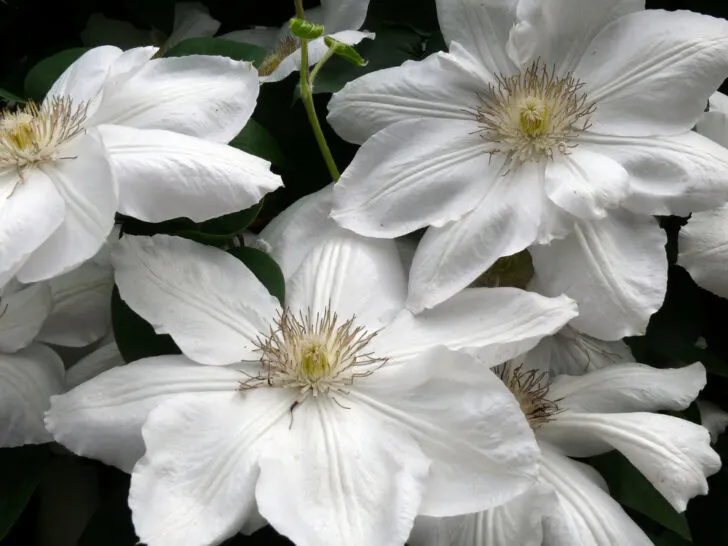
Also known as the leather flower, the clematis is a member of the ranunculus family and features over 300 species of plants. These perennial vines are popular landscaping plants around the world and do best in USDA hardiness zones 4 to 9.
These flowers are a great option if you’re looking to attract birds to your garden, and their strong scent makes them a popular landscaping option. Additionally, depending on where you plant it, this plant can also make for a natural privacy barrier between you and your neighbors.
Conclusion
These are only 51 of the most beautiful types of white flowers you can find. White flowers are extremely popular for their delicate beauty and use in floral arrangements, especially bridal bouquets. ‘
If you’re looking for white flowers for your garden, you’re in luck. Whether you want a tree, shrub, or vine, there’s something out there for everyone.
Other Articles You May Be Interested In
45 Elegant Types of Lily Flowers

